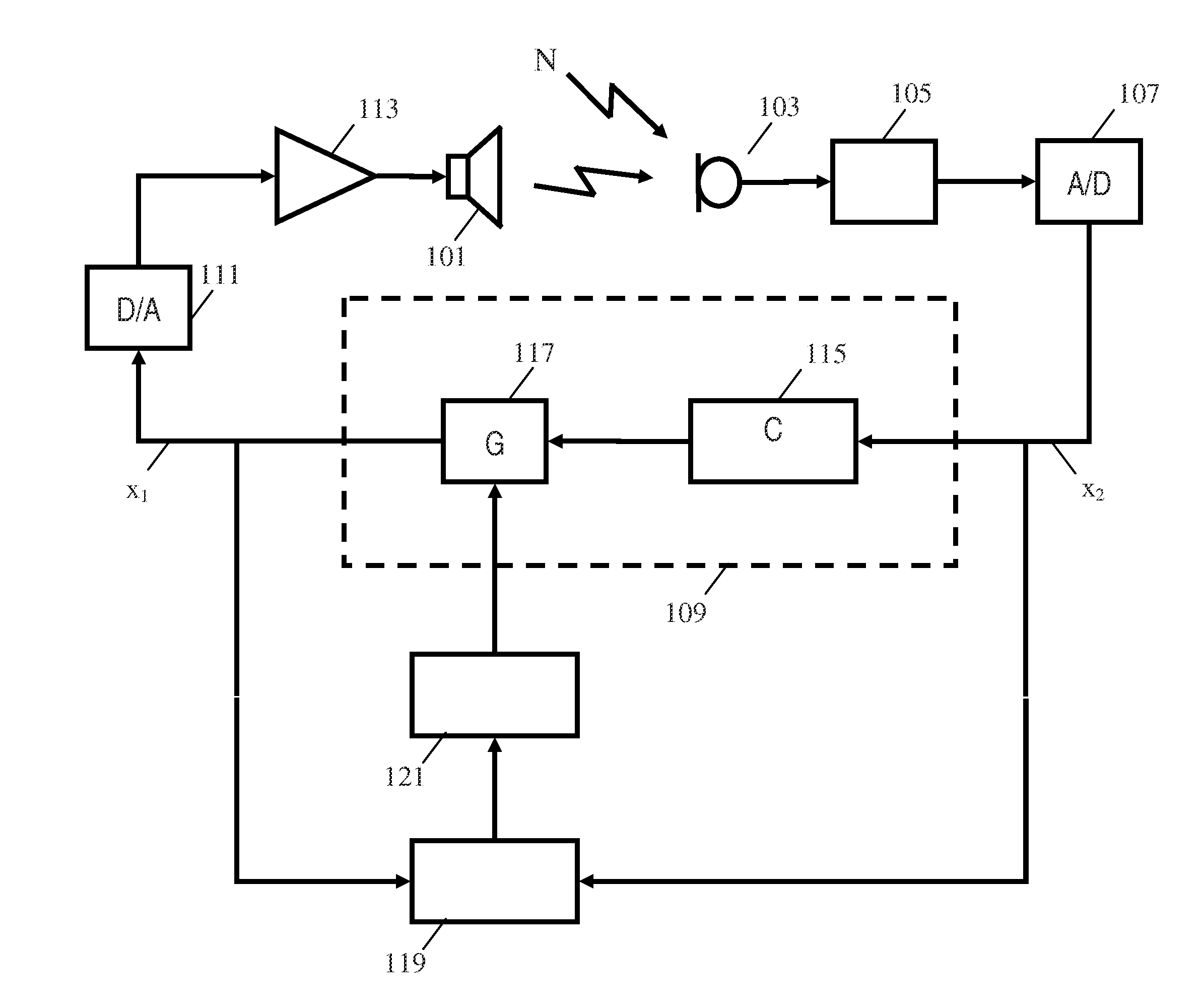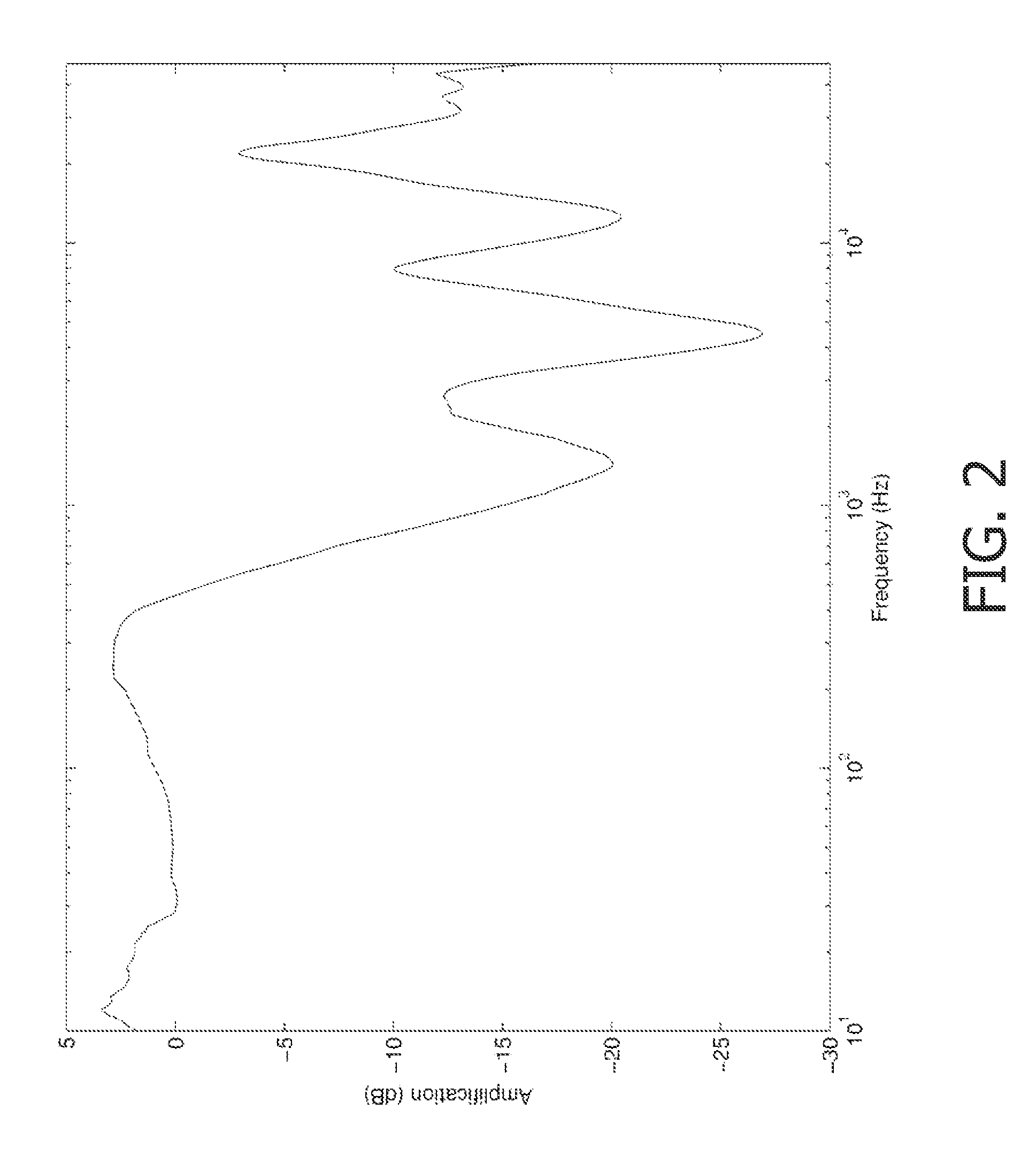Active audio noise cancelling
a technology of active audio and noise cancelling, applied in the field of active audio noise cancelling system, can solve the problems of reducing performance, affecting the performance of parts of the feedback loop that are prone to vary in the transfer function of parts of the feedback loop, and causing destructive interference at least partly cancelling out the nois
- Summary
- Abstract
- Description
- Claims
- Application Information
AI Technical Summary
Benefits of technology
Problems solved by technology
Method used
Image
Examples
Embodiment Construction
[0050]The following description focuses on embodiments of the invention applicable to an audio noise canceling system for a headphone. However, it will be appreciated that the invention is not limited to this application but may be applied to many other applications including for example noise canceling for vehicles.
[0051]FIG. 1 illustrates an example of a noise canceling system in accordance with some embodiments of the invention. In the specific example, the noise canceling system is a noise canceling system for a headphone. It will be appreciated that FIG. 1 illustrates the exemplary functionality for one ear and that identical functionality may be implemented for the other ear.
[0052]The noise canceling system comprises a sound transducer which in the specific example is a speaker 101 of the headphone. The system furthermore comprises a microphone 103 which is located close to the user's ear. In the specific example, the headphone may be a circumaural headphone which encloses the...
PUM
 Login to View More
Login to View More Abstract
Description
Claims
Application Information
 Login to View More
Login to View More - R&D
- Intellectual Property
- Life Sciences
- Materials
- Tech Scout
- Unparalleled Data Quality
- Higher Quality Content
- 60% Fewer Hallucinations
Browse by: Latest US Patents, China's latest patents, Technical Efficacy Thesaurus, Application Domain, Technology Topic, Popular Technical Reports.
© 2025 PatSnap. All rights reserved.Legal|Privacy policy|Modern Slavery Act Transparency Statement|Sitemap|About US| Contact US: help@patsnap.com



